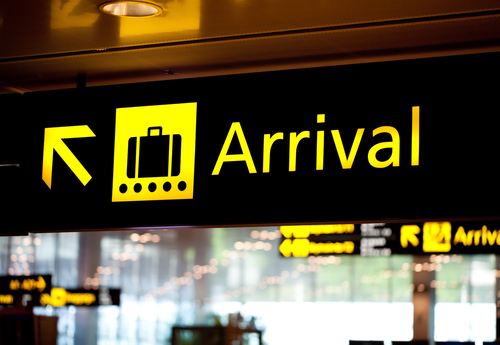Counter-drone technology performed so poorly in U.S. government tests in recent years that the systems couldn’t reliably identify rogue unmanned aircraft, casting doubts on whether there’s a viable short-term solution to the intrusions that repeatedly disrupted the London airport this week.
Radars designed to track drones didn’t work when the devices hovered in place. The systems generated a large number of false sightings. And the saturation of radio broadcasts around airports blanked out some drone transmissions, making them hard to detect.
The test results were contained in a letter to U.S. airports sent in July by the Federal Aviation Administration and seen by Bloomberg News. It advised air-strip operators not to obtain the counter-drone systems and warned they could be in violation of multiple laws if they do.
“The FAA does not endorse or advocate for the use of countermeasures in the airport environment given the likely resulting impact on the safety and efficiency of the nation’s airspace,” John Dermody, FAA’s director of airport safety and standards, wrote in the July 19 letter.
Gatwick briefly halted flights on Friday after another drone flew near the airport, the third day such illegal incursions disrupted traffic during the busy holiday travel season. The airport has been trying to get operations back on track after an earlier 36-hour suspension that derailed travel plans for more than 120,000 people.
U.K. law enforcement and military have been photographed using what appear to be drone detectors that can home in on their control signals. So far, authorities haven’t been able to stop the flights or apprehend their operators.
The Department of Homeland Security is working with U.K. authorities and has offered to supply technical support, according to a statement from the agency. The FAA hasn’t commented on the Gatwick situation.
Earlier this year, Congress granted authority to the FBI and Homeland Security agencies to monitor drone radio signals and to use measures to take them down in extreme cases.
Even though agencies such as the Transportation Security Administration have been aware of the drone threat for years, the Gatwick situation has sent shock waves through the world of airport security, said John Halinski, a former TSA deputy administrator.
“It is a major problem,” Halinski said. “I don’t think it’s being addressed properly.”
Drones can cause more damage in a collision with an airliner than a similar-sized bird, a 2017 study commissioned by FAA found. Simulations predicted significant damage to windshields, wings and tail surfaces of aircraft. However, an impact with a small consumer drone -- the most popular models weigh about two to three pounds (0.91 to 1.36 kilograms) -- isn’t likely to prove catastrophic, the study found.
Calls to airports and law enforcement agencies around the U.S. suggest that there are few tools available beyond reports from the public and the eyes and ears of officers.
Reports of drone sightings near Baltimore-Washington Thurgood Marshall International Airport would be investigated by officers on patrol to locate the operator, said Corporal Edward Bartlinski, public information officer for the Maryland Transportation Authority Police, which has jurisdiction over the airport.
The agency would also contact federal law enforcement officials for assistance. The department doesn’t have an official policy on drone countermeasures, he said.
“That could be looked at in the future but as of right now, the public is our best weapon against something like that happening here,” he said.
Andrew Trull, a spokesman for the Metropolitan Washington Airports Authority that oversees Reagan National Airport in Washington, D.C. and Dulles International Airport in Virginia, said law enforcement officials treat possible drone activity much like other potential hazards to aircraft, such as birds, he said.
“For us at least, it’s been something that we haven’t really had to deal with but I think everybody following Gatwick is particularity vigilant and aware that it is an issue,” Trull said.
The July letter from FAA suggests that existing technology to halt or deter such intrusions isn’t too promising.
“High radio spectrum congestion” around airports made detecting drone control signals more difficult than anticipated, the FAA said in the letter. In some instances detection wasn’t possible at all.
Some detection systems lost sight of the drone if it stopped moving, the letter said. Large numbers of people were required to monitor the systems because they generated so many false alarms.
High Costs
Drone detection systems require redundant equipment in order to cover an airport, making the costs “prohibitive,” the agency said. Because drone technology is changing so rapidly, any counter measure “rapidly becomes obsolete.”
Just as vexing to any airport wanting to obtain defenses against drones are the host of legal restrictions such technology faces, the FAA said. Federal laws restricting wiretapping, eavesdropping, and interfering with radio broadcasts and satellite signals all could be violated with various anti-drone technologies, according to the FAA.
The agency said it was hopeful that a requirement the government is seeking for drones to broadcast their identity and location would be more effective than the technology it had tested. The agency, which is working with law enforcement and homeland security agencies, is hoping to unveil a proposal for drone-ID tracking next year.
China’s DZ DJI Technology Inc. already embeds drone-ID technology into its devices, and it sells a monitoring device that some airports have adopted. It doesn’t work on drones made by other manufacturers.
The Port Authority of New York & New Jersey, which overseas the area’s airports, said it would join forces with other agencies to address any drone threats.
“The response to any drone activity at our airports would be a coordinated one between the Port Authority of New York and New Jersey, the Port Authority Police Department, the FBI and the Joint Terrorism Task Force,” it said in a statement. “For obvious security reasons, we cannot discuss further details.”













